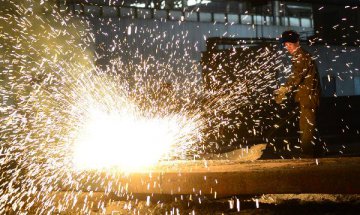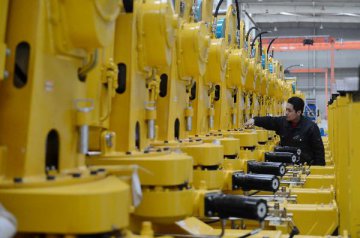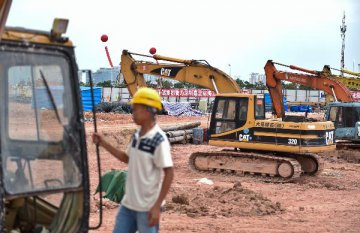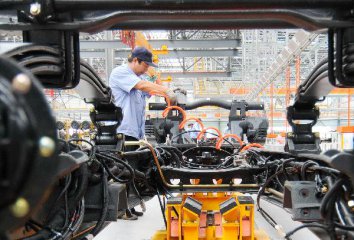
China’s economy growth stabilization policy is producing accumulative effects. PMI, the precursory economic indicator, starts to recover in September. The implementation of a number of investment projects aimed at stabilizing the economy has more clear effects on driving the growth of large-scale enterprises, contributing to the PMI of large-scale enterprises again to stand on the confidence threshold of 50 percent. All these are signs of a stabilizing Chinese economy.
Data issued by China Federation of Logistics & Purchasing(CFLP) and National Bureau of Statistics (NBS) shows that China’s PMI in September is 49.8 percent, 0.1 percentage point higher than the previous month, recording a rebound for the first time in nearly four months.
“Slight increase of PMI in September indicates economic downturn is slowing down. Sub-indices on new order, new export order and production are all picking up, implying the recovery of market demand and a positive industrial growth. Overall, relevant stabilization policy begins to take effect and there are signs of steady economic growth” said Zhang Liqun, macro-economy researcher at Development Research Center of the State Council (RDC).
Chen Zhongtao, Vice-chief Economist with China Logistics Information Center (LIC) holds the same view. He observed that weak performance of PMI of manufacturing industry is improving and demonstrating positive signs of stabilization and recovery, which indicates the impact of offseason is mitigating, and stabilization measures and policies will take enhanced effects, leading the economy movement turns to growth along a slow but steady track.
In the second half of the year, China's economy faces increased downward pressure. To inhibit the economic slowdown, the government launched a series of stabilization policies. Since September, an increasing number of signs show that such policies are producing accumulative effects.
This can be known from the sub-indices of PMI. The latest data shows that the PMI of large enterprises picked up to 51.1 percent in September. Liu Xuezhi, a senior researcher from finance research center of Bank Of Communications Co., Ltd. (03328.HK; 601328.SH) told SSN that “the large enterprises witnessing a reading of PMI above the confidence threshold of 50 percent again is mainly contributed by the implementation of a great many of investment projects, which boosts their production. However, the PMI of small and medium-sized enterprises was below the confidence threshold and is still declining. Further policy support is needed”.
At the same time, the non-manufacturing PMI kept at 53.4 percent in September, facilitating the economic stabilization. Consumption demand in retail, accommodation, express delivery and internet showed obvious recovery. Economic transition boosting economic growth is gradually taking effect.
Wu Wei from the LIC analyzes that “market operation of non-manufacturing is performing better. The number of commercial activity in the third quarter is more than that in the second quarter. Demand for consumption and infrastructure construction drives the economy and is expected to develop to be a stable impetus pushing forward the economic growth.”
Major economic indicators for September will be successively released from next week. The market predicts that it is difficult for indicators such as investment and export for September to see improvement, but the growth rate of consumption may keep the recovering trend and become an economic highlight.
(Translated by Adam Zhang & Vanessa Chen)






















Latest comments